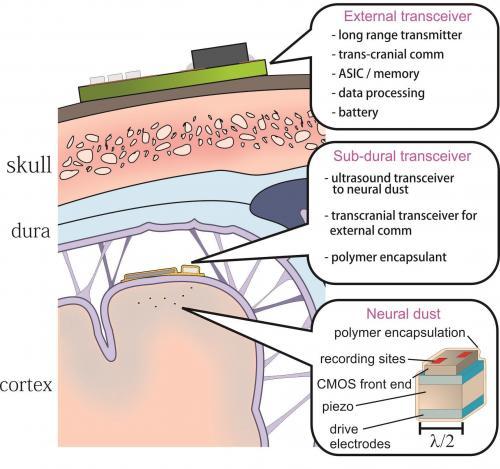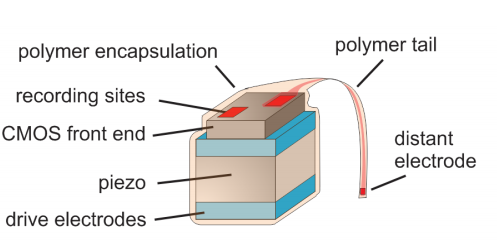
A major hurdle in brain-computer interfaces is the lack of an implantable neural interface system that remains viable for a lifetime. The paper explores the fundamental system design trade-offs and ultimate size, power, and bandwidth scaling limits of neural recording systems.

A network of tiny implantable sensors could function like an MRI inside the brain, recording data on nearby neurons and transmitting it back out. The smart dust particles would all contain an extremely small CMOS sensor capable of measuring electrical activity in nearby neurons. The researchers envision a piezoelectric material backing the CMOS capable of generating electrical signals from ultrasound waves. The process would also work in reverse, allowing the dust to beam data back via high-frequency sound waves. The neural dust would also be coated with polymer.
- More in-depth article on this research can be found on MIT Technology Review.
- Full research paper: Neural Dust: An Ultrasonic, Low Power Solution for Chronic Brain-Machine Interfaces

